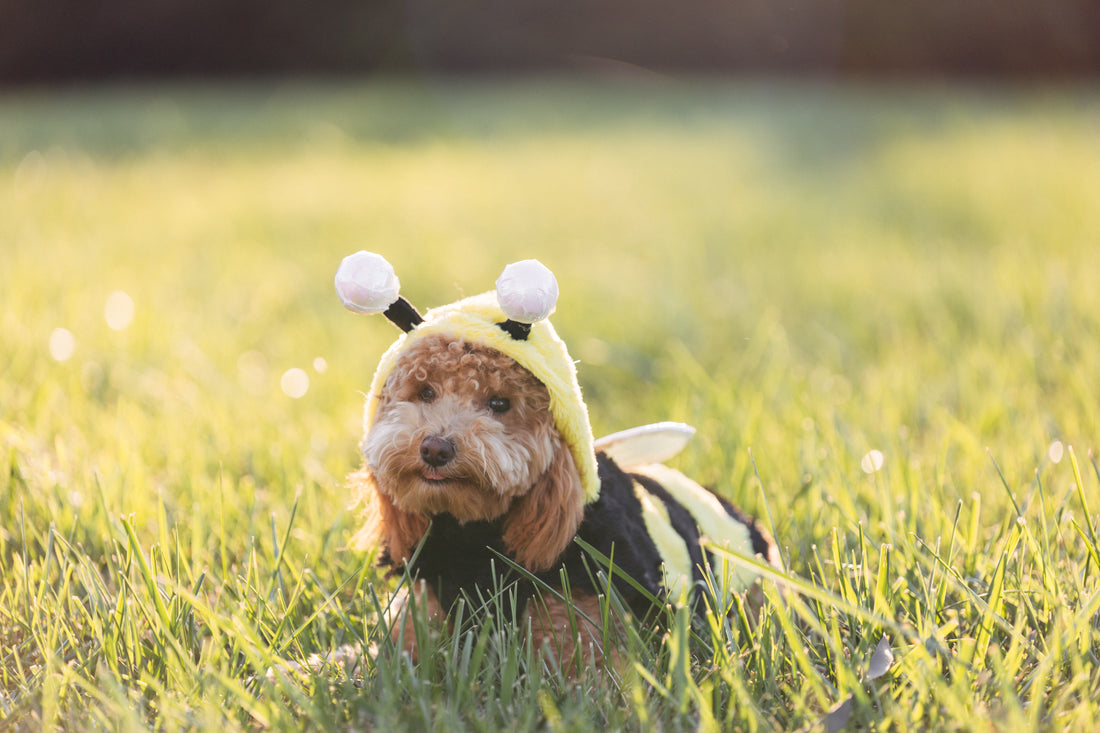"I will never forget the day my dog was stung by a bee! He was lying happily outside on my porch, as he had done a million times before, but when checked on him, it was pretty obvious that something was amiss. When I called his name, he turned toward me, and his lower lip was huge, and hanging down so far, I honestly thought he had a tennis ball in his mouth. Ten minutes later, I was in the car, on the way to my vet."
What to Do if Your Dog is Stung by a Bee and is Experiencing Signs of an Allergic Reaction
First and foremost, if your dog begins to experience any sign of an allergic reaction, you should seek veterinary care immediately. This is even more important if you suspect they have been stung in the mouth or throat area. Being stung in this area often results in rapid and severe swelling, a potentially extremely dangerous situation that can block their airway.

Signs of an Allergic Reaction After a Bee Sting
- Excessive swelling in the mouth and face
- Difficulty breathing
- Disorientation
- Weakness, trouble walking, and collapsing
- Drooling and vomiting
If your dog is not exhibiting signs of an allergic reaction, take the following steps:
- If you know your dog has been stung, remain calm so as not to stress your dog further. This is imperative for a dog experiencing a physical reaction, and most especially one that compromises their breathing in any way.
- Try to quickly determine where your dog was stung. This is because your best chance of preventing an allergic reaction is to find and remove the stinger as quickly as possible. The longer the stinger remains, the more venom will be injected into the body.
- Once located, remove the stinger by grasping it with your fingers, and pulling it out. Another suggested option is to use a credit card! With this method, you simply scrape the card across the skin to remove the stinger.
According to all the experts, the removal of the stinger as quickly as possible is far more important than the actual method of removal.
Caring For Your Dog After a Bee Sting
Assuming your dog is only experiencing some minor discomfort from the sting, there are ways to make them comfortable until symptoms pass.

- Monitor the area. Treat and sooth redness and irritation at the sting site, using an antimicrobial spray.
- Reduce any swelling by apply ice to the area.
- If you suspect your dog is experiencing any pain, ask your vet for a pain reliever.
- Using an antihistamine such as Benadryl is also helpful. The typical dosage is 1 mg per pound, but it is always recommended that you consult your vet as well.
Preventing Bee Stings in Dogs
It’s important to note, that most bees, especially bumble bees, are not at all aggressive. It’s actually their stinging counterparts, wasps and yellow jackets, often mistaken for bees, that tend to be more aggressive, especially when provoked. Although it’s impossible to keep your dog away from all stinging insects, removing any nests near your house, or in areas where your dog spends time, will go a long way in preventing a potential sting.
Related Articles:
Featured Products:
Every Sale Supports a Shelter Pet. Learn More.
Created in Vermont. Learn More.
If you suspect your pet is sick, call your vet immediately. For health-related questions, always consult your veterinarian, as they have examined your pet, know the pet's health history, and can make the best recommendations for your pet.




